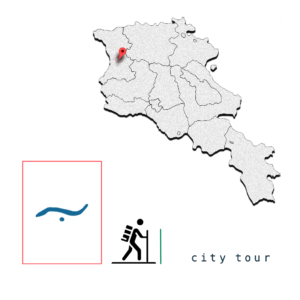The railway junction of Gyumri is the oldest and the largest one in Armenia. It was formed in 1897. The first railway link to Gyumri that connected the city (then officially called Alexandropol) with Tiflis was completed in 1899. The rail line was then extended from Alexandropol to Yerevan (in 1902), Kars (in 1902), Jolfa (in 1906), and Tabriz. As a result, Alexandropol became an important rail hub.
The present building of the station, built in 1979, was designed by local architect Rafik Yeghoyan, and in some of its features, particularly in the spatial composition of its entrance hall, echoes medieval Armenian architecture, a tendency sometimes characteristic of soviet Armenian modernist architecture.
As of 2018, the Gyumri railway station operates regular trips to Yerevan, Tbilisi and Batumi. The South Caucasus Railway, is the current operator of the railway sector in Armenia.
See more details about Gyumri Railway Station on Wikipedia article
Plan your visit to Gyumri Railway Station and a wealth of other attractions in Armenia, well-known and undiscovered, using our tour itinerary planning tool. We can design a complete itinerary for you including suggestions of our favourite places and things to see. We’ll book all your accommodation and transport, and of course we’ll drive you anywhere you like along the way.

Let's work together
Ready to build something special? Hire a trip designer now!
Utravel Adventures and Tours
Trips led by local experts—activities, meals, and stays included.
Explore attractions and more near Gyumri Railway Station
What to do in Shirak
Shirak Province is named after the Shirak canton of the historic Ayrarat province of Ancient Armenia, ruled by the Kamsarakan noble family between the 3rd and 8th centuries.
According to Movses Khorenatsi, the name Shirak is derived from Shara, who was the great grandson of Hayk the legendary patriarch and founder of the Armenian nation. However, according to the Shirak Regional Museum, many historians assume that the name is derived from the name Eriakhi found in an ancient Urartian cuneiform, where king Argishti I narrated about his invasion of the land of Eriakhi.
